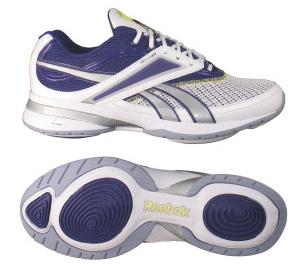American Podiatric Medical Association Offers Toning Shoe Tips and Foot-Friendly Products
Shoes that feature “rocker bottoms” and “pods” have become the latest footwear craze—a new way to get in shape simply by walking or running. Toning footwear, which claims to promote muscle toning using micro-instability, can be found in a variety of brands and designs. While many may be ready to lace up the first pair they find, the American Podiatric Medical Association (APMA) reminds consumers to be mindful of the footwear products they purchase and to wear them safely.
“It’s important for people to realize that so-called ‘toning’ or ‘fitness’ footwear is not a cure-all that will tone the entire body,” said APMA President Dr. Kathleen Stone. “Toning shoes should be utilized similar to any other piece of athletic training equipment. This type of footwear should be viewed as an addition to an exercise program, to strengthen and tone certain targeted muscle groups.”
Certain types of toning footwear, such as Reebok’s EasyTone Reeinspire (above), have been given the APMA’s Seal of Acceptance.
In general, toning footwear is designed to increase the use of certain muscle groups that may not be challenged in typical running or walking shoes. This increased use of specific muscles may result in increased muscle tone over time, similar to the benefits of walking barefoot in sand. However, proper safety should always be considered. Excessive exercise in toning footwear, including walking for extended periods of time without building up a break-in period, could lead to overuse injuries including sprains, Achilles tendinitis, and shin splints.
The APMA highly recommends that consumers educate themselves about each specific toning product and what it has been designed for to help avoid injury. Individuals with tight posterior calf muscles or Achilles tendons may not be able to tolerate toning shoes, as they put increased strain on these body parts.
Additionally, keep in mind the following when considering toning shoes as part of your exercise routine:
- Ease into wear. Toning footwear often has a break-in period in order to be worn safely and effectively. All types of toning shoes should first be worn for short periods of time, until the body adjusts to the new style of walking. Those with pre-existing balance or stability problems may want to avoid wearing toning footwear.
- Look for the APMA Seal. Several toning footwear products, such as Reebok’s EasyTone and those made by Grasshoppers, Avia, and Ryka, have been evaluated by the APMA and found to be foot-friendly. These products have been granted the APMA’s Seal of Acceptance.
- Find the right design for you. There are numerous types and brands of toning footwear currently on the market, including designs created specifically for running or walking only. Since there are differences in how toning shoes are constructed, find a toning shoe that fits the foot comfortably and that does not cause your natural gait to feel too unstable. Read product packaging and description for the manufacturers recommended use.
- Remember to stretch. As with any form of exercise, spend several minutes stretching before and after participating in any type of physical activity—especially when preparing to wear toning footwear.
- Be wary of claims. APMA has evaluated certain toning products and confirmed that they are beneficial to foot health and of significant value when used in a consistently applied program of daily foot care and regular professional treatment.
A full listing of toning footwear with the APMA’s Seal of Acceptance can be found at www.apma.org/athleticfootwear.
For more information:
Follow APMA on Facebook: http://www.facebook.com/theAPMA
On Twitter: @APMAtweets
Founded in 1912, the American Podiatric Medical Association (APMA) is the nation’s leading and recognized professional organization for doctors of podiatric medicine (DPMs). DPMs are podiatric physicians and surgeons, also known as podiatrists, qualified by their education, training and experience to diagnose and treat conditions affecting the foot, ankle and structures of the leg. The medical education and training of a DPM includes four years of undergraduate education, four years of graduate education at an accredited podiatric medical college and two or three years of hospital residency training. APMA has 53 state component locations across the United States and its territories, with a membership of close to 12,000 podiatrists. All practicing APMA members are licensed by the state in which they practice podiatric medicine. For more information, visit www.apma.org.



